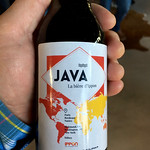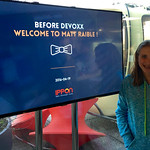Life as an Open Source Developer, One Year Later
It's been a little over a year since I wrote about life as an open source developer. I'm happy to say I still haven't written a single line of proprietary code. Of course, things have changed a lot in the last year. I thought going full-time would bring stability to my career. Instead, six months into it we joined forces with Okta.
The transition was rough at first. At Stormpath, we had full-featured SDKs and a great relationship with developers that used our service. We were able to port many of our SDKs to work with Okta, but we discovered that Okta didn't have a great relationship with developers. In fact, their developer blog hadn't been updated in over a year when we arrived.
On the upside, Okta's API supported standards like SAML, OAuth, and OpenID Connect. Open standards made it possible to use other frameworks and not have to rely on our own. I was pumped to find that Spring Security made it easy to integrate with SAML and OAuth. In fact, I was able to leverage these standards to add OIDC support to JHipster.
Okta's new developer console and open pricing are just a couple examples of improved happenings since we arrived. The Okta Spring Boot Starter and JavaScript libraries for Node.js, Angular, and React are also pretty awesome.
I'm happy to say my contributions on GitHub almost doubled in the last year!
As far as stress is concerned, that hasn't changed much. I've learned that the stress I feel from work is still causing me to have high blood pressure. When I measure it in the mornings, or at night, it's fine. When I measure it during the day, it's elevated. I believe my high blood pressure is caused by doing too much. Sure, it's great to be productive and accomplish a lot for my company, but it's killing me.
Therein lies the rub. I get to create my job. All I'm asked to do is write a blog post per week and speak at a conference (or meetup) once a month. Yet I'm doing way more than that. Since this time last year, I've delivered 33 presentations, in 13 different cities. I keep a page on this blog updated with all my presentations.
Next year, I still plan to speak a lot, but I plan on toning things down a bit. I'll be concentrating on US cities, with large Java user groups, and I'll be limiting my travel overseas.
 Outside of my health concerns, I'm still loving my job. The fact that I get paid to speak at great conferences, write example applications, and discover new ways to do things is awesome. It's also pretty sweet that I was able to update the JHipster Mini-Book and upgrade 21-Points Health during work hours. The fact that I got featured on the main Okta blog was pretty cool too.
Outside of my health concerns, I'm still loving my job. The fact that I get paid to speak at great conferences, write example applications, and discover new ways to do things is awesome. It's also pretty sweet that I was able to update the JHipster Mini-Book and upgrade 21-Points Health during work hours. The fact that I got featured on the main Okta blog was pretty cool too.
The good news is my overseas travel isn't done this year. Today, I leave for Devoxx Belgium, one of my favorite conferences. It'll be my first time in Antwerp without Trish. However, I'm speaking with friends Josh Long and Deepu Sasidharan, so it's sure to be a good time. Traveling to Devoxx Morocco should be fun too. I've never been to Casablanca before.
In December, you can catch me at SpringOne and The Rich Web Experience. Next year, I'll be speaking at Denver Microservices meetup, Utah JUG, Seattle JUG, and JazzCon. I plan to do a JUG tour in the northeast US too.
You might've noticed I don't write a lot of technical content here anymore. That's because I'm doing most of my writing on developer.okta.com/blog. I'm still writing for InfoQ as well. I really enjoyed attending the JavaOne keynotes and writing up what I saw.
- Oracle Announced Plans to Open Source All Features of Their JDK and Address Shortcomings in Java EE
- JavaOne Keynote: Oracle Talks Blockchain, Bots and Serverless
- JavaOne Keynote: IBM on OpenJ9 and Open Liberty; Java Community in The Matrix
I'll leave you with this, a project I'm working on actively and plan to finish before Devoxx Morocco.
Had a good hacking session today w/ @java_hipster & @Ionicframework. Creating a JHipster-enabled Ionic client works! https://t.co/5biHQDO941
— Matt Raible (@mraible) November 3, 2017
Viva la Open Source!

















